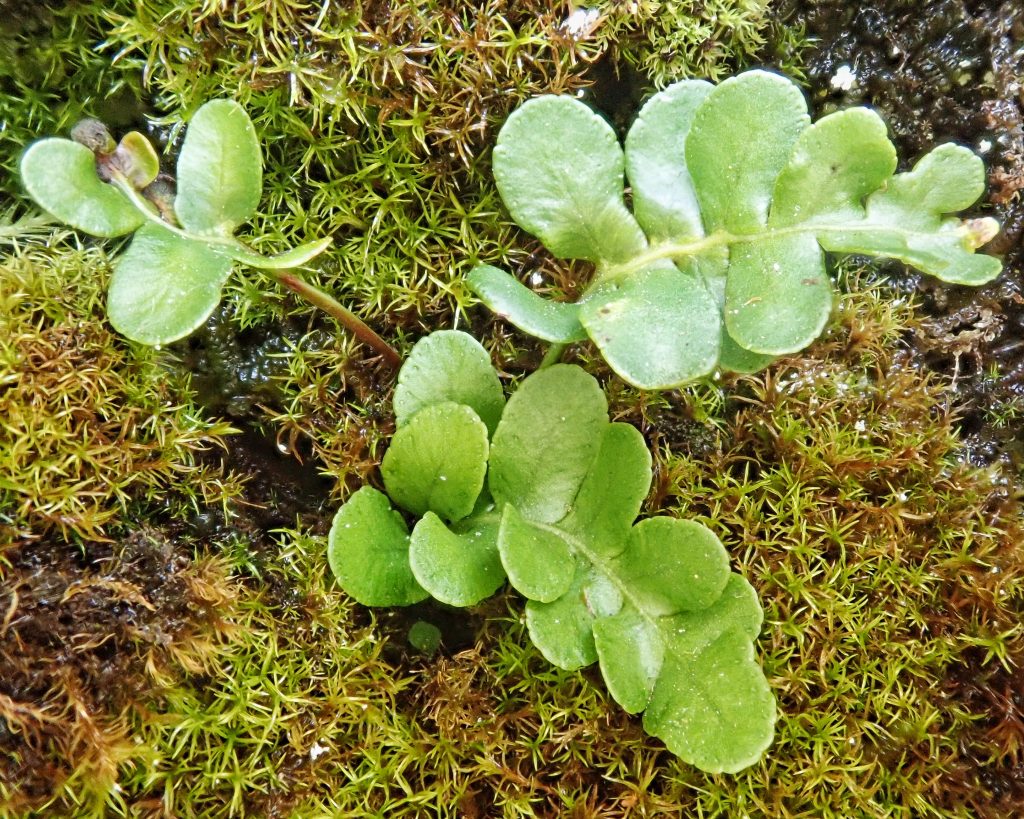
Thanks to a tip from Ash Gill, who kindly provided not only excellent directions complete with distances and verifiable landmarks but actual coordinates to the very spot, I was finally able to find Polypodium amorphum. And thanks to David Wagner I was able to positively identify it, since I don’t trust myself to navigate the maze of morphological plasticity and overlap between this species and P. hesperium, a fertile tetraploid hybrid of P. amorphum and P. glycyrrhiza (Licorice Fern)
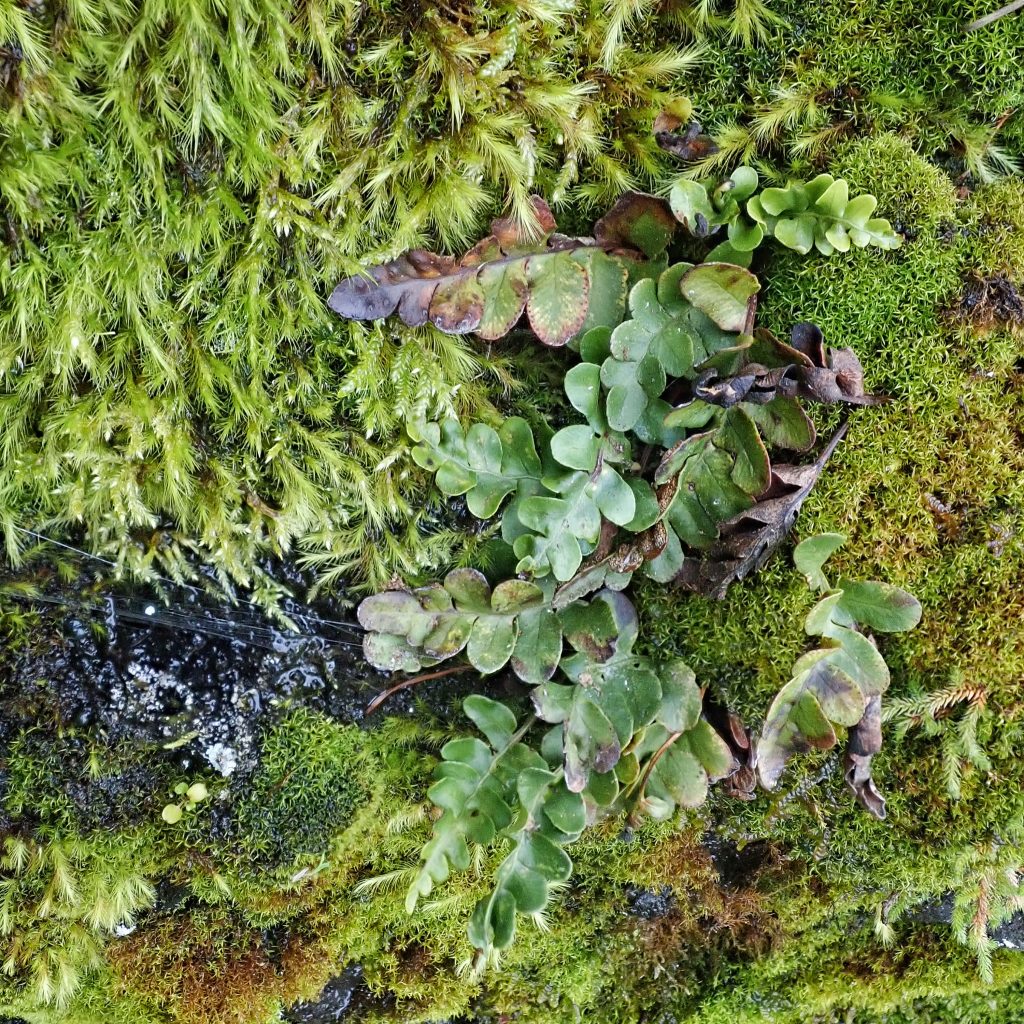
I discussed this relationship at length in my profile of Polypodium glycyrrhiza, a relationship I had been unaware of before doing the research for Licorice Fern. In fact prior to that research I had been completely unaware of how often, and by what mechanism, ferns will interbreed and form fertile hybrids. My curiosity was such that I have spent dozens of hours in the Columbia River Gorge trying to find either P. amorphum or P. hesperium, so I feel very fortunate to have stumbled across Ash’s post, and for her to be so gracious and helpful with information.
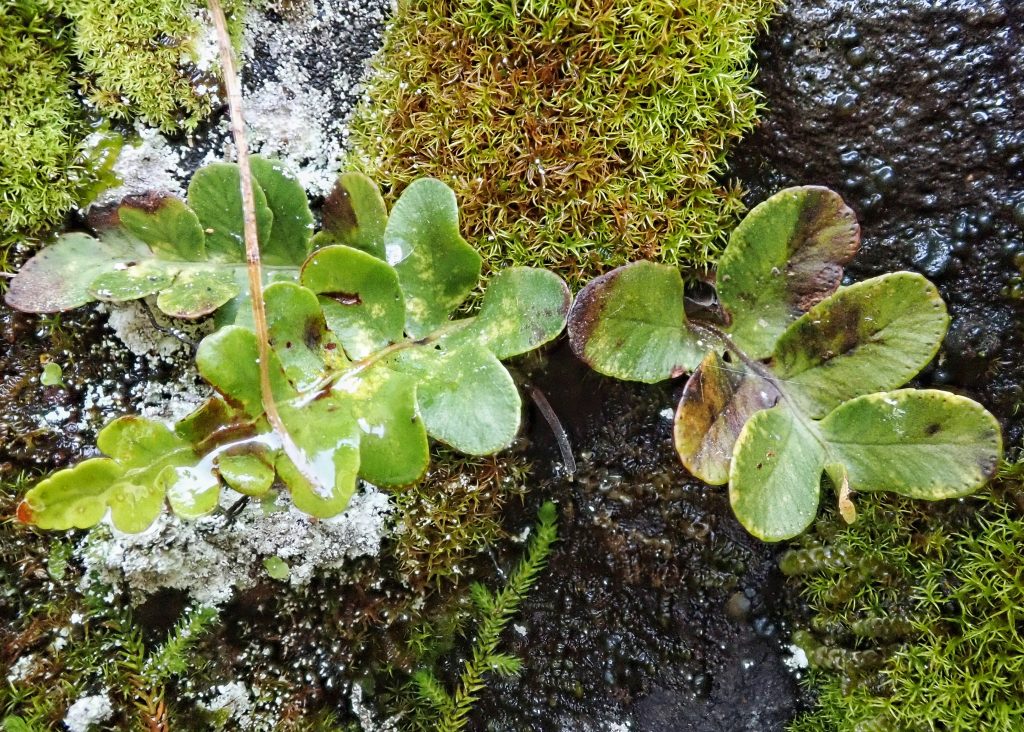
Since it appears that this fern had no ethnobotanical uses, I’d instead like to tell a human interest story regarding the nomenclature of this plant, as related by David Wagner, who was a friend of Frank Lang. It seems that noted PNW botanical pioneer Wilhelm Suksdorf found and named this taxon back in 1937. But because it appeared to be a mutant form of P. hesperium the name was not accepted. Fast forward 30+ years and Frank Lang discovers, while doing his doctoral studies, the relationship between this plant, P. glycyrrhiza, and P. hesperium. But when he goes to publish he discovers P. amorphum isn’t considered to be a valid name, and he is forced to coin Polypodium montense for this taxon.
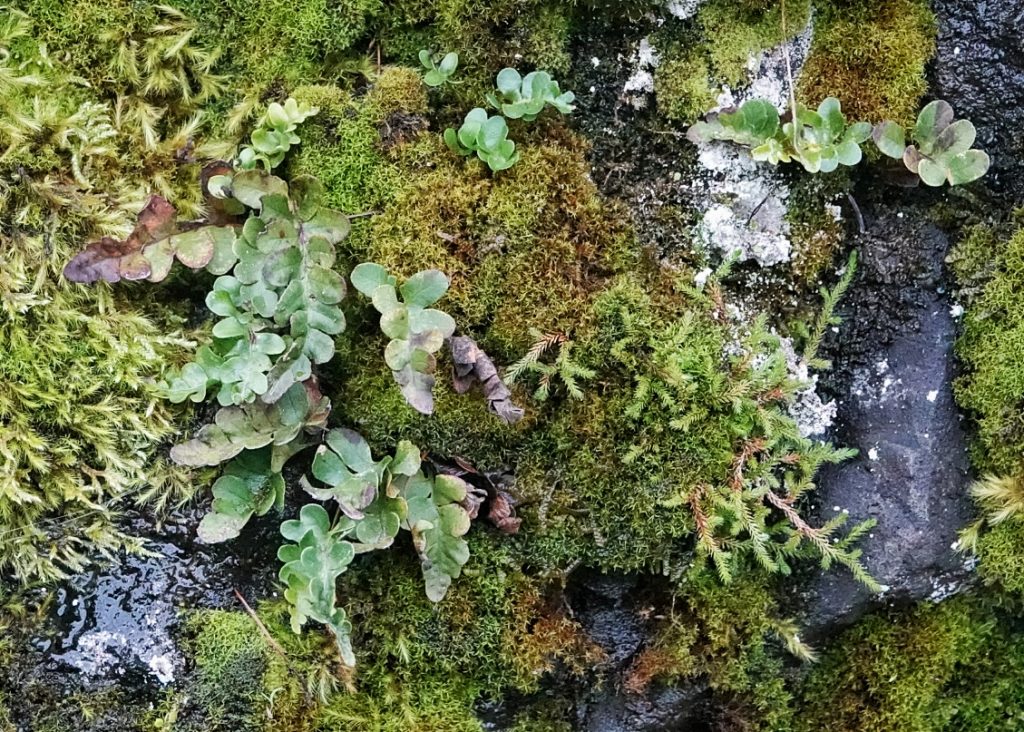
However, the international nomenclatural committee ended up reversing their opinion on ‘monstrosities’ due to their inability to define them, and validated P. amorphum, which left Dr. Lang open to ridicule for creating a ‘superfluous’ name (which is considered to be quite bad form in taxonomy circles), by those who were clueless about the circumstances that led to it. This in turn led Frank Lang to abandon the judgemental and apparently rather snobby and cutthroat world of research, and turn instead to teaching, much to the benefit of his students at Southern Oregon University, and to the thousands of people who tuned in for his weekly radio pieces called ‘Nature Notes’. Frank Lang passed away in 2019 at the age of 82.
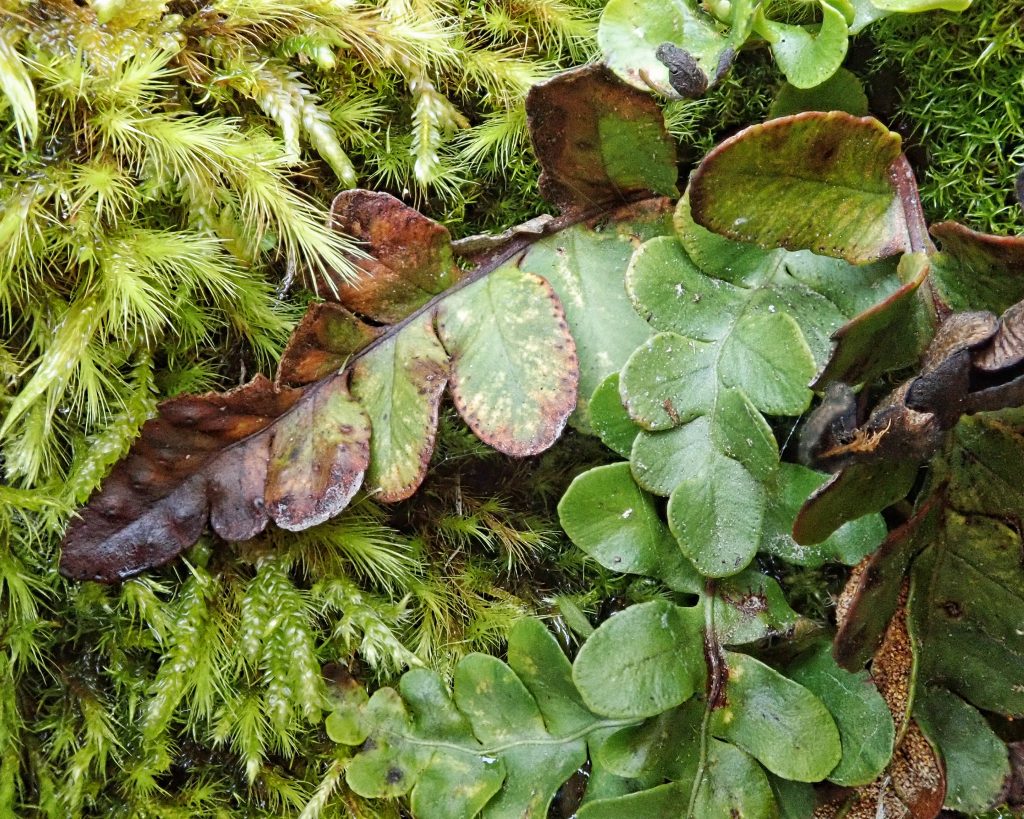
Description-Fairly small (fronds tend to be less than 12” long) fern with somewhat leathery, sessile pinnules; pinnules twice, or less, as long as wide, slightly to distinctly crenellated, with gently rounded to blunt tips; sori are round, and closer to the margin than to the midrib; rhizome acrid, does not taste like licorice.
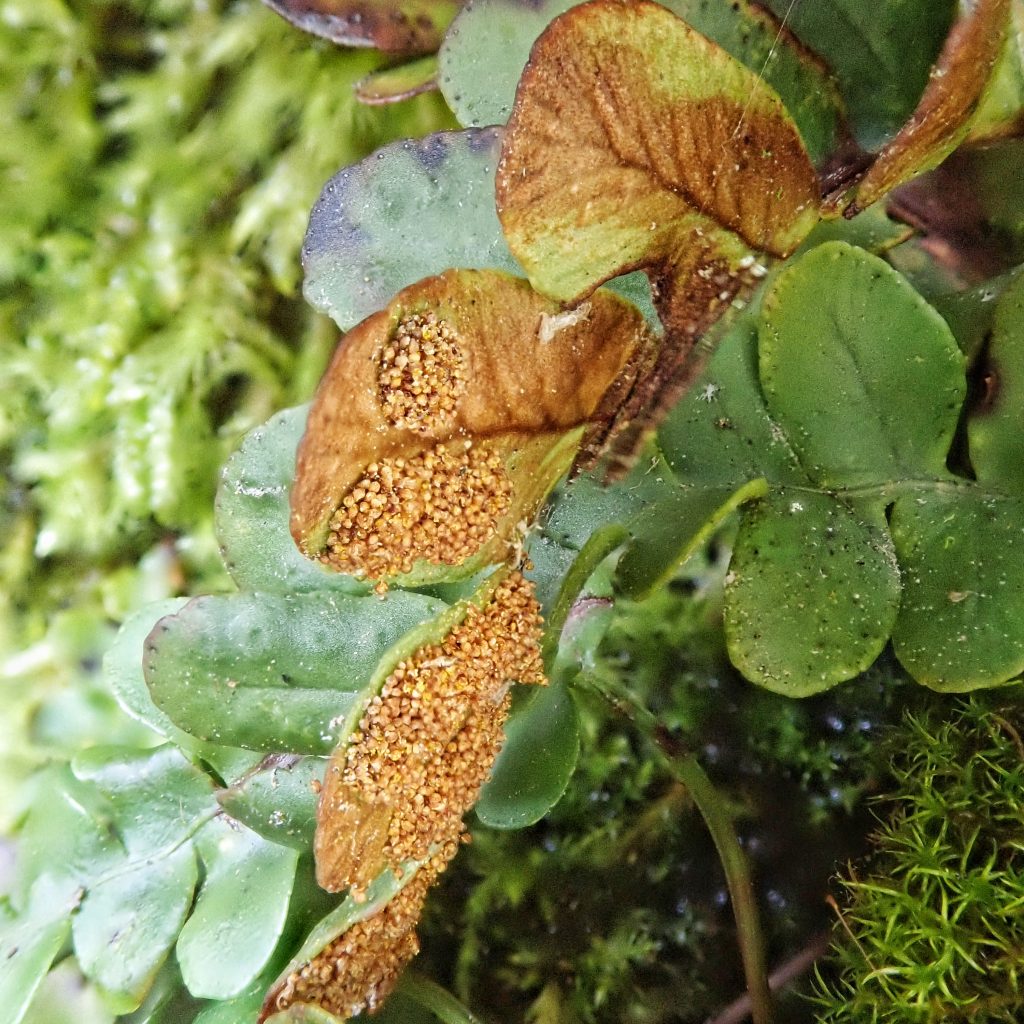
Similar species–Polypodium glycyrrhiza has longer, narrower, pointed pinnules, and the root tastes of licorice; Polypodium hesperium has oval sori that are midway between the midrib and the margin; Polypodium scouleri has much larger and longer pinnules which are quite leathery, and is only found at the immediate coast; Polystichum munitum (Sword Ferns) have pinnae on short petioles; Blechnum spicant (Deer Fern) have sterile fronds with fertile stalks growing from the center of the rosette.
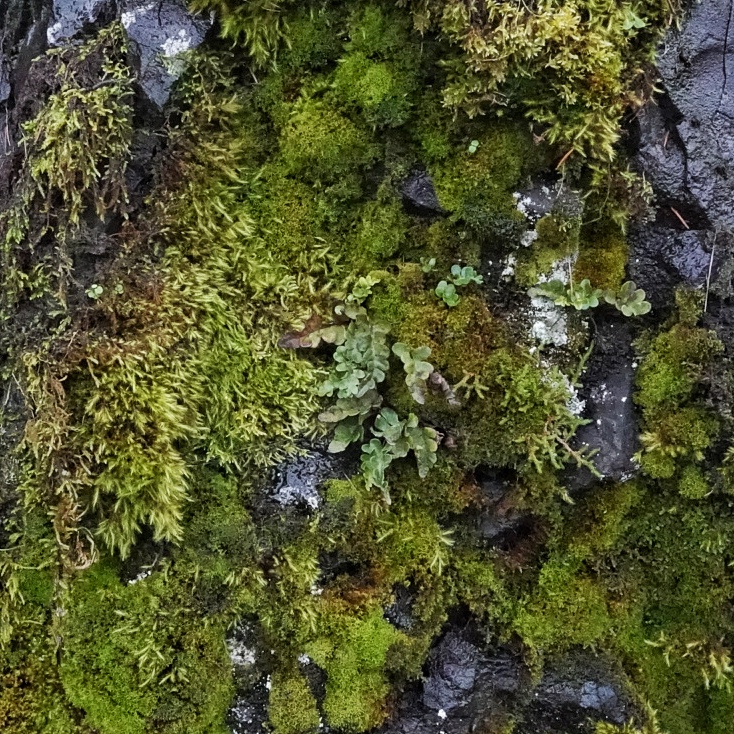
Habitat-Uncommon; on rock, often overhanging, and always within mats of moss.
Range-PNW endemic; found at higher elevations in the Cascades, Olympics, and Coast Range, and throughout the wetter parts of the Columbia River Gorge.
Reproductive timing-Spores released in summer and fall.
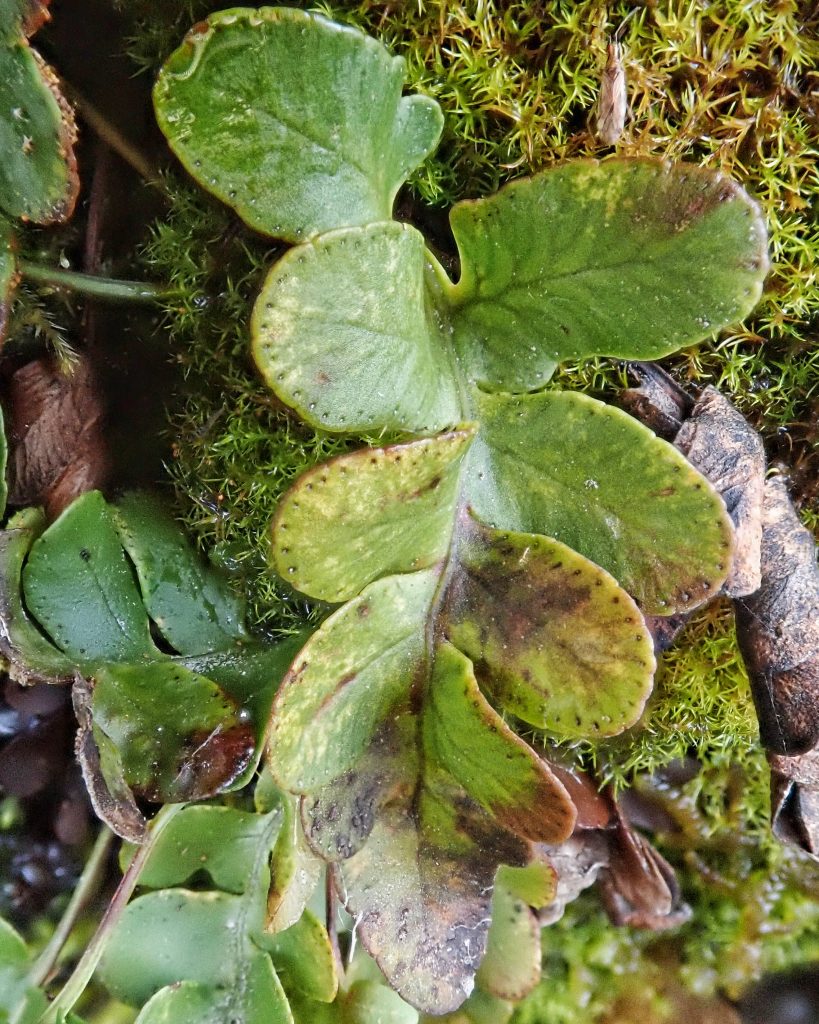
Eaten by-It is possible that it is a larval host for the moth Pseudobryomima muscosa, since that moth is known to utilize other Polypodium.
Etymology of names-Polypodium means ‘many footed’ in Latin, and refers to this genus’ propensity for springing up from rhizomes. The specific epithet amorphum is from the Greek word for ‘without form’ and my guess is that Suksdorf was referring to this fern as appearing to be a rather amorphous version of Polypodium hesperium.

http://www.efloras.org/florataxon.aspx?flora_id=1&taxon_id=233500973
http://biology.burke.washington.edu/herbarium/imagecollection/taxon.php?Taxon=Polypodium%20amorphum
https://www.frontiersin.org/articles/10.3389/fpls.2018.01450/full
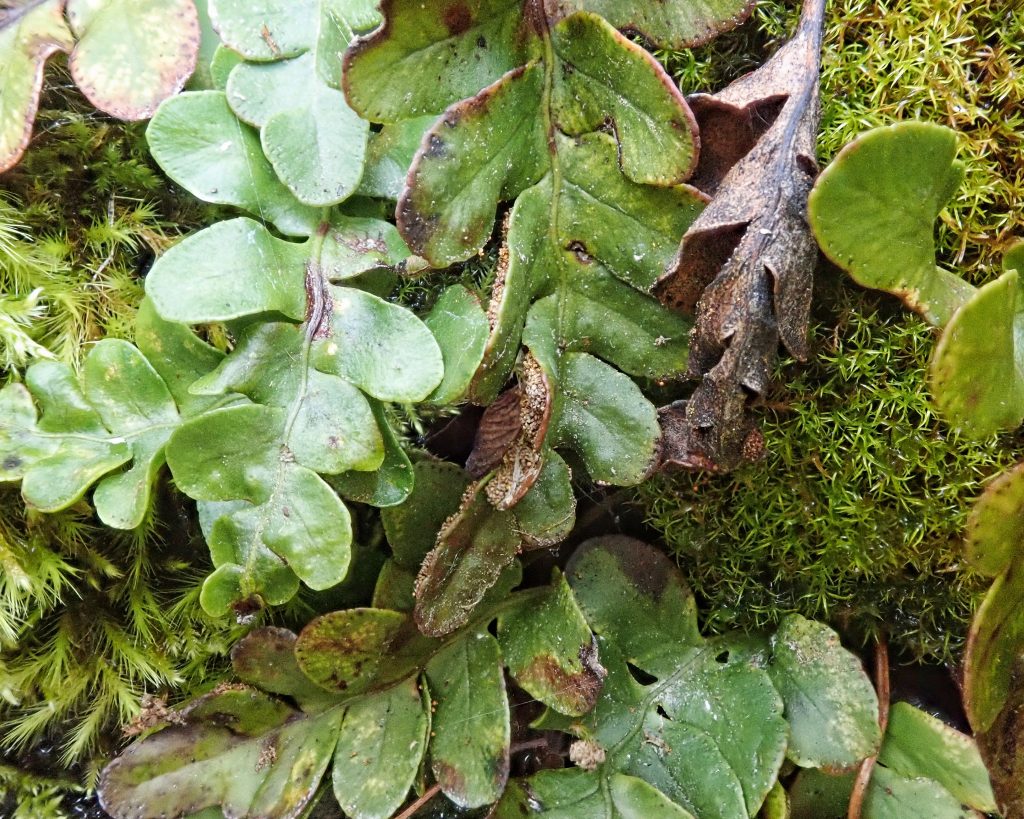
Great post, thanks Dan.
Thanks, Chris!
Very helpful! Could you also pls distinguish this from Polypodium scouleri in your “similiar species” section?
Thanks, and sorry! I meant to do that. I’ll add this in the next time I’m at my computer, but for now I can say that P. scouleri has much more leathery leaves and is almost never found very far from the immediate coast. If you can’t smell salt air, then it isn’t P. scouleri